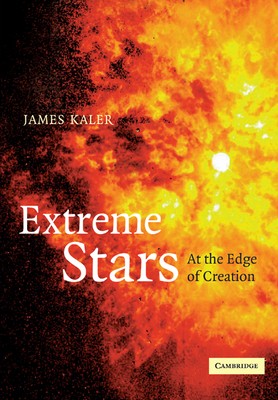
- We will send in 10–14 business days.
- Author: James B Kaler
- Publisher: Cambridge University Press
- ISBN-10: 0521158028
- ISBN-13: 9780521158022
- Format: 17 x 24.1 x 1.5 cm, minkšti viršeliai
- Language: English
- SAVE -10% with code: EXTRA
Reviews
Description
Over the past 200 years, our knowledge of stars has expanded enormously. From seeing myriad dots of different brightnesses, we haved moved on to measure their distances, temperatures, sizes, chemical compositions, and even ages, finding both young and ancient stars that dwarf our Sun and are dwarfed by it. Unique in its approach, Extreme Stars describes the lives of stars from a new perspective by examining their amazing features. The result is a refreshing, up-to-date, and engaging overview of stellar evolution, suitable for everyone interested in viewing or studying the stars. Ten chapters, generously illustrated throughout, explain the natures of the brightest, the largest, the hottest, and the youngest, among other kinds of stars, ending with a selection of the strangest stars the Universe has to offer. Extreme Stars shows how stars develop and die and how each extreme turns into another under the inexorable twin forces of time and gravity. James B. Kaler is Professor of Astronomy at the University of Illinois, Champaign-Urbana. He has held Fulbright and Guggenheim Fellowships, has been awarded medals for his work from the University of Liège in Belgium and the University of Mexico, and most recently was selected to give the Armand Spitz lecture by the Great Lakes Planetarium Association. His research area, in which he has published over 100 papers, involves dying stars. Kaler has also written for a variety of popular magazines, including Astronomy, Sky & Telescope, and Scientific American. His previous books include The Ever-Changing Sky (Cambridge, 1996), Stars and their Spectra (Cambridge, 1997), Cosmic Clouds (Scientific American Library Paperback, 1998), and The Little Book of Stars (Copernicus, 2000). He is a current member of the Board of Directors of the Astronomical Society of the Pacific and is a frequent guest on radio and television shows.
EXTRA 10 % discount with code: EXTRA
The promotion ends in 23d.18:51:36
The discount code is valid when purchasing from 10 €. Discounts do not stack.
- Author: James B Kaler
- Publisher: Cambridge University Press
- ISBN-10: 0521158028
- ISBN-13: 9780521158022
- Format: 17 x 24.1 x 1.5 cm, minkšti viršeliai
- Language: English English
Over the past 200 years, our knowledge of stars has expanded enormously. From seeing myriad dots of different brightnesses, we haved moved on to measure their distances, temperatures, sizes, chemical compositions, and even ages, finding both young and ancient stars that dwarf our Sun and are dwarfed by it. Unique in its approach, Extreme Stars describes the lives of stars from a new perspective by examining their amazing features. The result is a refreshing, up-to-date, and engaging overview of stellar evolution, suitable for everyone interested in viewing or studying the stars. Ten chapters, generously illustrated throughout, explain the natures of the brightest, the largest, the hottest, and the youngest, among other kinds of stars, ending with a selection of the strangest stars the Universe has to offer. Extreme Stars shows how stars develop and die and how each extreme turns into another under the inexorable twin forces of time and gravity. James B. Kaler is Professor of Astronomy at the University of Illinois, Champaign-Urbana. He has held Fulbright and Guggenheim Fellowships, has been awarded medals for his work from the University of Liège in Belgium and the University of Mexico, and most recently was selected to give the Armand Spitz lecture by the Great Lakes Planetarium Association. His research area, in which he has published over 100 papers, involves dying stars. Kaler has also written for a variety of popular magazines, including Astronomy, Sky & Telescope, and Scientific American. His previous books include The Ever-Changing Sky (Cambridge, 1996), Stars and their Spectra (Cambridge, 1997), Cosmic Clouds (Scientific American Library Paperback, 1998), and The Little Book of Stars (Copernicus, 2000). He is a current member of the Board of Directors of the Astronomical Society of the Pacific and is a frequent guest on radio and television shows.


Reviews